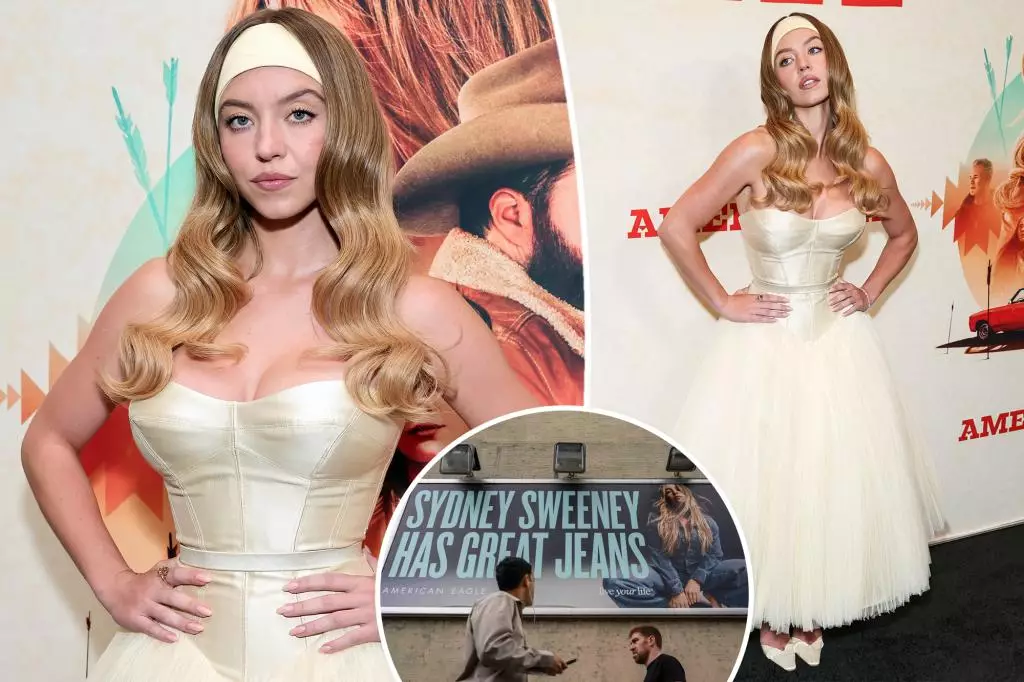In the world of Hollywood, every appearance is scrutinized, but Sydney Sweeney’s recent red carpet choice exemplifies the tension between personal expression and public judgment. Ditching her everyday jeans—famously linked to her brand and personal identity—she opted for an unconventional gown that sparked widespread online criticism. Her buttery yellow Danielle Frankel dress, featuring a corset top and tulle skirt, was meant to shine, yet many perceived it as a misstep. This decision reveals a broader issue: celebrities are often expected to conform to certain aesthetics, especially when linked to brands like American Eagle, which, despite its marketing efforts, faces its own controversy.
Sweeney’s sartorial departure can be seen as a rebellious act against the house style of casual comfort associated with her previous campaigns. However, it also highlights how public opinion often dismisses genuine artistic experimentation. Instead of celebrating her attempt at high fashion, critics swiftly targeted her appearance with insults and mockery. This reaction underscores society’s rigid standards for celebrity looks, where deviation from the norm is often met with sharp censure rather than appreciation.
The Power of Social Media and Public Sentiment
The backlash against Sweeney’s look was amplified through social media, where comments ranged from playful teasing to outright harsh judgments. Users made digs at her “fashion genes,” comparing her style choices to her personal traits and even her political stances. Such comments reveal how the digital sphere acts as a battleground for identity, taste, and perception. When a celebrity flaunts something that diverges from expected norms, they risk not only aesthetic critique but also becoming symbols in larger cultural debates.
One can argue that the social media commentary was less about the dress itself and more about dehumanizing her or putting her in a box based on identity markers mentioned—like her voting registration or perceived political leanings. The tendency to scrutinize her stylist, Molly Dickson, with insinuations of malice further exemplifies how celebrity fashion becomes entangled in personal attacks, obscuring the artistic intent behind the look.
Rebranding and Blurring the Lines Between Campaigns and Personal Style
American Eagle’s attempt at a provocative campaign, claiming “Genes are passed down from parents to offspring,” was meant to celebrate individuality. Yet, the campaign’s reception suggests that brands and celebrities must carefully navigate the fine line between empowerment and controversy. Sweeney’s red carpet look, while separate from her advertising role, inevitably became linked to her association with the brand, prompting teasing about her “fashion genes” and political identity.
This intersection raises questions about authenticity and the ways in which public figures are often pressured to conform to certain aesthetics or sentiments aligned with brand narratives. Is a bold fashion choice genuinely personal, or is it crafted within the constraints of public expectations and commercial interests? Sweeney’s attempt to push creative boundaries underscores her willingness to challenge those boundaries, even if society is quick to dismiss her effort as a fashion faux pas. Ultimately, her daring style decisions serve as a reminder that personal expression—especially in the world of fame—is inherently political and vulnerable to relentless public scrutiny.

